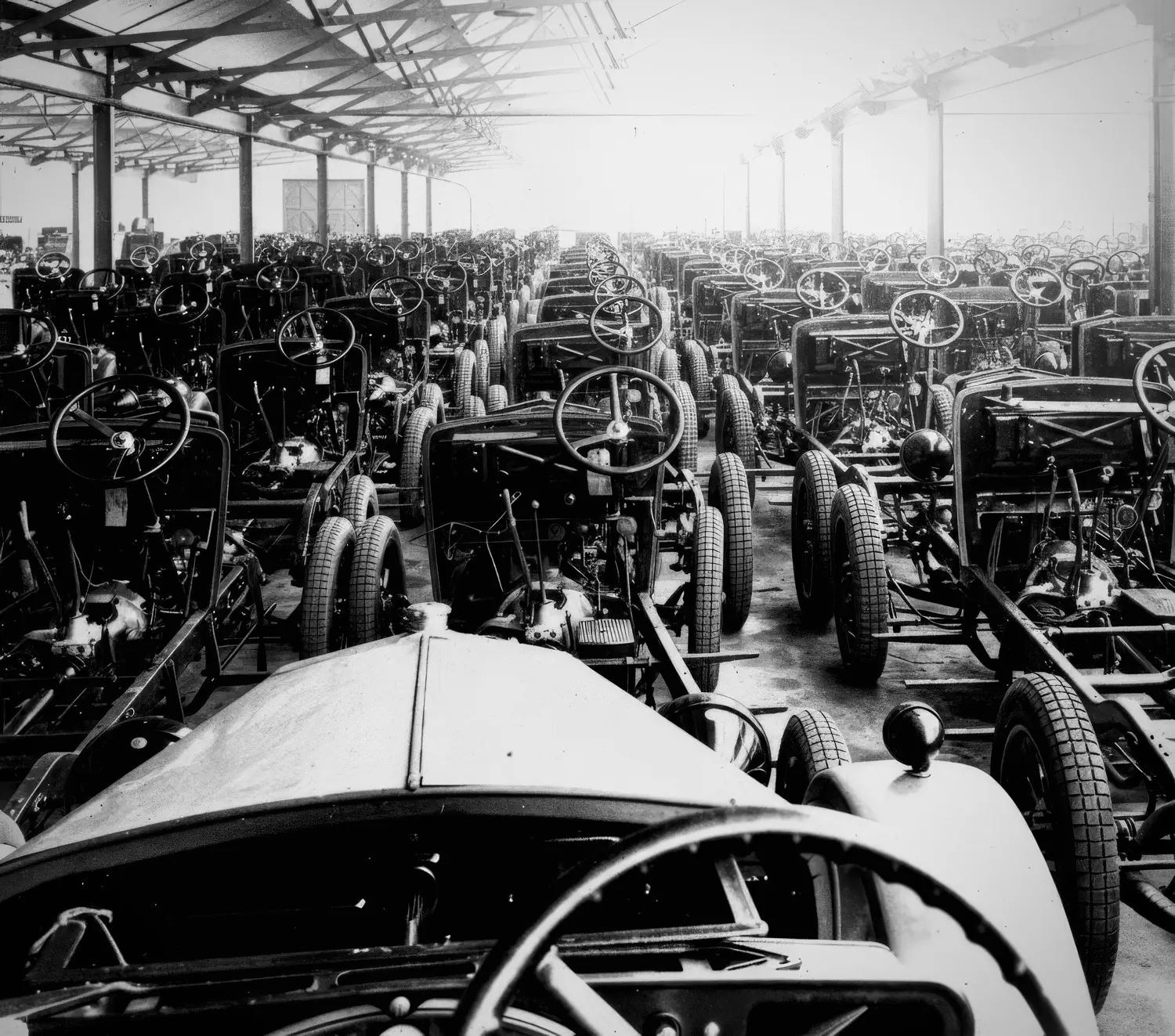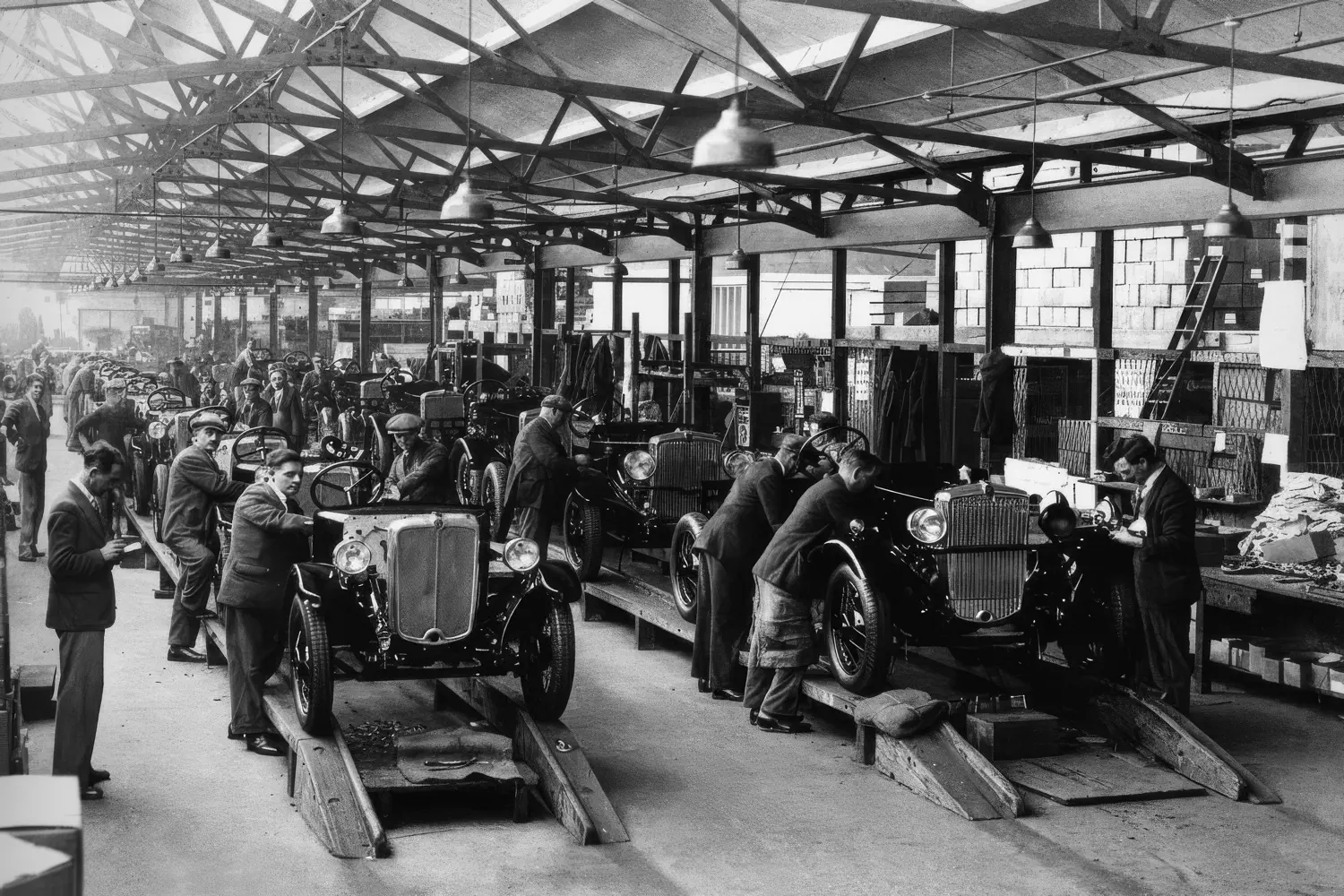William Morris: The Man Who Built the British Car Industry (And Then Gave It All Away)

Before William Morris, the British motor car was largely a handcrafted toy for the rich. Morris was the man who changed all that. He wasn't a pioneering inventor in the classic sense. He was something far more important in the 20th century: a brilliant, and often ruthless, industrialist who looked at what Henry Ford was doing in America and decided he could do it better. From a humble bicycle repair shop, he built an empire that, for a time, was the British motor industry. He put the nation on wheels and then, in an act of extraordinary generosity, gave most of his immense fortune away. He also made the catastrophic mistake of hiring the man who would eventually dismantle everything he'd built.
The Boy From The Bicycle Shed
Born in Worcester in October 1877, William Richard Morris arrived as the eldest of seven children to Frederick Morris, a draper's clerk. Only three of the seven survived infancy. When young William was three, the family moved to Headington, Oxford, where his grandfather ran Wood Farm. The boy attended school irregularly and left at 15 when his father's illness demanded he earn money. His formal education stopped at Standard III. He'd wanted to study medicine. Instead, he ended up repairing bicycles.
In 1893, aged 16, Morris asked his employer at a bike shop for a pay rise after nine months. When refused, he quit and set up his own repair business in a shed behind his parents' house in James Street with £4 capital. He was also a champion racing cyclist, winning about 100 championships across distances from one to 50 miles, and at one point held county champion titles in three counties simultaneously. The racing taught him what mattered: simplicity, reliability, and never building what you could buy cheaper elsewhere.
He moved methodically from bicycles to motorcycles to hiring and selling cars, opening the first Morris Garage on Longwall Street in 1902. In 1912, he registered WRM Motors and converted a disused military college at Cowley into a car factory. The first Morris Oxford "Bullnose," assembled in 1913, was a masterpiece of pragmatic assembly. Morris bought engines from Continental of Detroit, gearboxes and axles from America, and simply bolted them together. He wasn't interested in reinventing the wheel, so to speak. He wanted to build cars quickly and sell them cheap. Other manufacturers were still hand-beating panels like medieval blacksmiths. Morris was already thinking like Ford.
The English Henry Ford
After the First World War, when 81 British car firms collapsed during the 1921 depression, Morris slashed prices and increased production. His Morris Cowley dropped from £425 in February to £215 by October. The public, desperate for affordable transport, responded with their wallets. By 1924, Morris held 51 per cent of the British car market. Production at Cowley reached 56,000 cars annually by 1925. He wasn't just the biggest. He was 42 per cent of the entire British car industry, a dominance Ford never achieved in America.
The profits were enormous, and Morris used them to swallow his suppliers and his rivals. In 1923, he bought Hotchkiss's Coventry engine works. In 1927, he acquired the collapsed Wolseley Motors for £730,000. Riley and MG followed. The Nuffield Organisation became a sprawling automotive empire. By the mid-1920s, Morris was employing thousands, making millions, and answering to nobody. The working-class boy from a bicycle shed was now the richest man in England. The transformation from fixing punctures to building an industrial empire had taken exactly twenty years.
The Divorce That Taught Him Spite
Success brought hubris. In 1926, Morris partnered with Edward G. Budd of Philadelphia and J. Henry Schroder bank to form the Pressed Steel Company, building a massive factory at Cowley opposite his own plant. It was meant to bring American body-pressing efficiency to Britain. Morris wanted the technology. Budd wanted European expansion. Two massive egos sharing one business rarely ends well.
British steel mills couldn't produce sheets large enough for Budd's massive presses. When they finally managed it, imported American steel was still 25 per cent cheaper. Morris wanted exclusivity for his cars. Budd, quite reasonably, wanted to sell bodies to anyone with money. The relationship deteriorated so completely that Budd dragged Morris to the High Court in May 1930. The judges sided with Budd. Morris was forced off the board, lost his entire investment, and watched from across the road as his former partner sold bodies to his competitors.
It was one of the few business battles Morris lost completely. The humiliation burned. He spent the rest of the decade building his own pressing plant right next door, driven by pure spite. It was gloriously petty and hugely expensive. Yet even this defeat couldn't stop his empire's growth. Morris was made Baron Nuffield in 1934, and Viscount Nuffield in 1938, taking his title from the Oxfordshire village where he'd bought Nuffield Place in 1933. The bicycle mechanic from James Street was now Lord Nuffield. Britain does love a self-made man, provided he knows his place. Morris never did.
The Saint Who Funded Fascists
Morris now possessed a fortune that would embarrass modern billionaires and seemed genuinely bewildered about what to do with it. In January 1931, he wrote a cheque for £50,000 to Oswald Mosley to launch the New Party. That's roughly £4 million today, handed to a charismatic politician with ambitious plans to tackle unemployment through public works and economic reform. Morris, convinced that Mosley's vision could save Britain from the Depression, provided the seed money. When the New Party failed and Mosley transformed it into the British Union of Fascists in 1932, Morris didn't follow. But the damage was done. The same man who would give millions to hospitals had bankrolled British fascism's political start. One suspects Morris wasn't much interested in where his money went, provided it looked respectable at the time.
In July 1934, when 180 workers at Cowley walked out spontaneously over low wages and terrible conditions, Morris discovered what happens when you pay poverty wages while being the richest man in England. For years, Morris had declared "I never allow the trade unions to interfere with me." The strike revealed the contradiction: a future philanthropist who crushed his workers while funding political extremists. Morris believed in charity for the deserving poor, preferably when they were safely in hospital beds and not causing trouble on his production line.
Yet the generosity was real, if selective. In 1938, Morris saw a demonstration of Edward Both's improved iron lung design during a London polio epidemic. Within weeks, he converted part of his Cowley factory to manufacture approximately 1,700 Both-Nuffield respirators, which he donated free to hospitals throughout Britain and the Empire. They cost one-thirteenth the price of American designs and saved thousands of lives. When Morris wanted to do good, he did it efficiently and at scale, like everything else.
The same year brought a bizarre incident. Serial blackmailer Patrick Tuellman attempted to kidnap Morris for a £100,000 ransom. Tuellman's accomplice betrayed the plot to Oxford police. Morris, oddly fascinated, insisted on attending every planning meeting for his own would-be kidnapping. One imagines the police found this somewhat awkward. They ambushed Tuellman in Cowley in May, finding him with two pistols, ammunition, and disguise materials. Birmingham Assizes convicted him that July. Morris's strange detachment from normal human reactions was never more evident.
Morris lived modestly himself, drove Morris or Wolseley cars, and made a point of mentioning his cheap suits. His only extravagance was golf. When the Huntercombe Golf Club committee questioned his suitability for membership, Morris allegedly bought the entire club. It's a perfect encapsulation of the man: miserly about suits, vindictive about slights. He was a heavy smoker and lifelong hypochondriac, fiercely protective of his reputation, and threatened expensive lawsuits against anyone attempting an unauthorised biography. When Alec Issigonis designed the Morris Minor in secret during the war, Morris called the prototype "a poached egg" and refused to speak to Issigonis for eleven years. The car that would later save Cowley was a design its creator despised. Morris only grudgingly thanked Issigonis in 1961, after the millionth Minor was built. Even then, one suspects he did it through gritted teeth.
The Protégé Who Promised Revenge
In 1932, Morris appointed Leonard Lord as Managing Director to modernise Cowley's production methods. Lord was brilliant, ruthless, and equally strong-willed. He swept through the works installing proper assembly lines, updating everything, transforming Morris's ramshackle operation into a modern factory. For four years, two autocrats tried to share power. It was always going to end badly.
By 1936, the relationship had collapsed. Lord resigned after a furious row, reportedly threatening to "take Cowley apart brick by brick." He moved to Austin, Morris's arch-rival at Longbridge. Several key Morris executives followed Lord, most notably George Harriman and Joe Edwards. Morris had just trained and empowered the man who would spend the next sixteen years building Austin into a formidable competitor whilst nursing that grudge. It was the worst personnel decision in British automotive history, and Morris made it with his eyes wide open.
In 1943, Morris endowed the Nuffield Foundation with £10 million in Morris Motors shares. The Nuffield Trust, Nuffield College Oxford, four medical professorships, the Nuffield Institute for Medical Research, and the Nuffield Orthopaedic Centre followed. Between 1926 and 1960, he gave away over £30 million, equivalent to roughly £700 million today. His childless marriage to Lilian meant the fortune would go to institutions, not heirs. Morris seemed relieved. Hospitals couldn't argue with him or threaten to unionise.
After the war, the Morris Minor finally entered production. Despite Morris's hatred of the design, it became a massive success. The "poached egg" turned out to be exactly what post-war Britain needed: cheap, reliable transport that actually worked. Morris never admitted he was wrong. He was constitutionally incapable of it. Meanwhile, Leonard Lord was building Austin into a powerhouse, waiting for his moment.
The Merger That Finished Him
In 1952, the government encouraged Morris and Austin to merge, creating the British Motor Corporation. On paper, it was a partnership of equals to create a national champion. In reality, it was Leonard Lord's revenge, executed in slow motion. Morris, aged 75, became BMC's first chairman but held no real power. The role was purely ceremonial. The real authority resided with Leonard Lord, now Managing Director. The man who'd threatened to take Cowley apart brick by brick was finally getting his chance, and he'd been given the keys by the government.
Lord installed Austin men in every key position, closing out former Morris management entirely. The Morris design office at Cowley was systematically shut down. Everything became Austin, with Morris badges stuck on for marketing purposes. By the end of the 1950s, all new BMC cars carried ADO development tags: Austin Drawing Office. Morris had become a badge on Austin's cars, nothing more. Within a year of the merger, Morris retired to the honorary presidency, a powerless figurehead watching his former employee dismantle the empire he'd built. Lord kept Morris around as a mascot, which must have been exquisitely painful.
William Morris died on 22 August 1963 at Nuffield Place. The Morris name survived him by twenty-one years, reduced to a marketing exercise slapped on increasingly cynical products. The Marina, launched in 1971, was so poorly conceived it lost money on every sale. The Ital, a desperate 1980 facelift that fooled nobody, was the final insult. The Morris marque expired in 1984, forty years after Morris lost control of his own company.
He put Britain on wheels, gave away £700 million in today's money, and funded the political start of British fascism. He crushed unions while endowing hospitals, rejected brilliant designs while the mediocre thrived, and appointed the man who systematically dismantled his life's work. Morris succeeded brilliantly at everything except the one thing that mattered: judging character.





